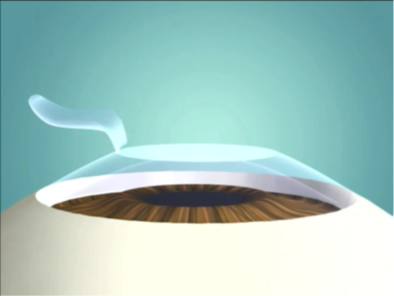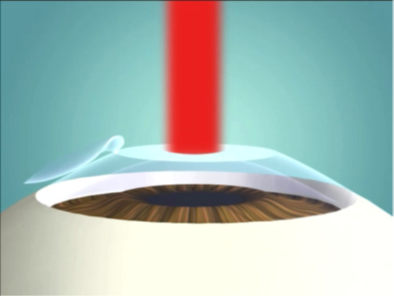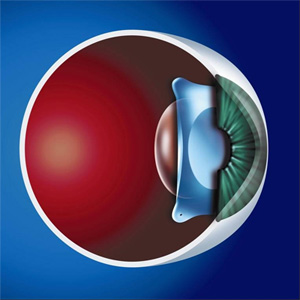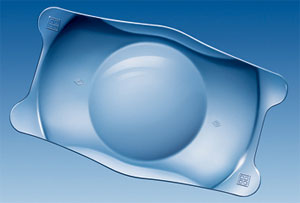LASIK has stood the test of time in terms of its success rate and efficacy and we offer it in several modes. It is basically an operation in which a corneal flap is raised and then an excimer laser is used to reshape the cornea underneath after which the flap is replaced. This is like carving a contact lens on the eye.
Before a patient even gets to the operating room though, much important work needs to be done as part of the pre-operative assessment. Only in this way can we assess if a patient’s eye is suitable for Lasik vision correction. This establishes the safety/benefit profile.
An accurate refraction to determine your refractive error is carried out by our fully qualified optometrist before and after pupillary dilatation. Other important measurements are also carried out: of importance is the corneal topography and we have two systems available to do this, the ORBSCAN II from Bausch and Lomb and the PENTACAM from Oculus. Corneal topography shows us the contours and thickness of the cornea so that an optimal treatment plan can be formulated by our doctors. Wavefront measurements using the Zywave aberrometer are also available. Finally a careful examination through the dilated pupil is made to exclude cataract and other retinal problems like retinal holes or detachments. If your LASIK surgeon does not do this, ask him to! Myopic individuals have a higher risk of thin retinas with holes or retinal detachments and it is an essential pre-LASIK examination. We have seen many patients over the years who have had these problems picked up during a thorough pre-LASIK assessment. These retinal problems need to be repaired before LASIK is considered.
Type of LASIK
The eye surgeon will review and check the numbers and plan the type of LASIK: essentially there are five types of LASIK:
- Standard plano-scan LASIK: this is the tried and tested, reliable and predictable LASIK procedure and is suitable for most people who have nice, thick corneas and ‘normal’ levels of myopia (eg under -6 or 600 degrees). It is also an economical method.
- Aspheric LASIK is the current iteration in LASIK treatment modalities. It gives good quality vision and yet saves on the amount of tissue used.
- Tissue-saving LASIK is a very useful form of LASIK because it allows patients with thinner corneas to have full myopic/astigmatic treatments and yet retain enough cornea for structural safety and for possible enhancement LASIK.
- Wavefront LASIK is useful in selected patients who have high levels of pre-existing aberrations in their visual system.
- ReLEx SMILE is the 3rd generation of laser vision correction. It is based on the flapless SMILE procedure (small incision lenticule extraction) and hence reduces the risk of flap related complications. This offers the potential for fewer transected corneal nerves and more preservation of tissues with consequent reduced incidence of dry eyes.
The LASIK procedure itself is a quick painless procedure that takes less than 10 minutes per eye. We recommend doing both eyes consecutively on the one occasion. We find that in so doing, patients adapt well during the recovery period as the eyes are balanced.
There are two ways of making a LASIK flap. The tried and tested microkeratome which uses a very high quality blade to make very predictable flaps, and the current femtosecond laser method which uses a laser to create the flap. Each method has its advantages and disadvantages with specific indications according to each individual’s eye condition and characteristics. We will assess each patient and advise them on the suitability of each of these two methods for their LASIK procedure.
After the procedure, a patient can go home after half an hour or so. When the anaesthetic wears off an hour or two later, the eye may feel uncomfortable, scratchy, itchy, uncomfortable and may water a lot. This is normal and eye drops are given to counter this. In most cases, by the time evening comes around, the pain has settled and patients are able to go out for dinner or watch television. It is also good to try and nap an hour or two after surgery.
The flap is first created and lifted to one side
Laser energy is then applied for a few seconds to a minute, to reshape the exposed surface of your cornea


ReLEx SMILE
 Small Incision Lenticule Extraction
Small Incision Lenticule Extraction












